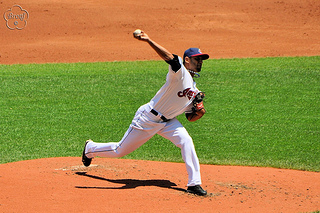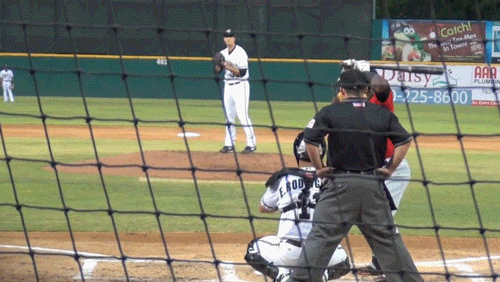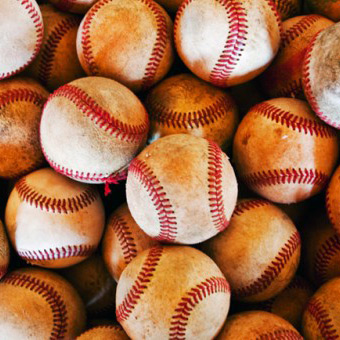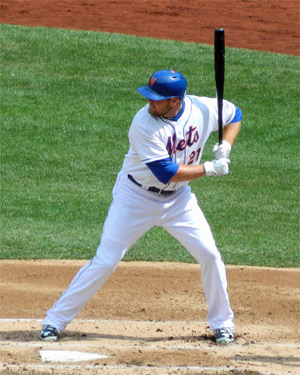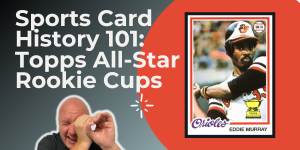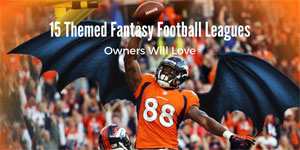(WARNING: THERE ARE GIFS AT THE END)
Real estate, knick-knacks at a garage sale, and players, in the sense of professional sports, can be undervalued.
For instance, in Boomerang: Travels in the New Third World, Michael Lewis interviews Kyle Bass, a hedge fund manager who made a fortune shorting subprime mortgage assets, who recently bought a million dollars worth of nickels. Yes, a million dollars of nickels.
“The value of the metal in a nickels is worth six point eight cents,” Bass said. Bass went on to describe how difficult it is to obtain 20 million nickels, the process he had to go through with the bank from which he bought the nickels from, and the Federal Reserve agent who questioned his motives and asked, “Why do you want all these nickels?” To which he responded, “I just like nickels.”
Baseball or Fantasy Baseball, for our purposes, is no different.
Just like Kyle Bass’ exploitation of the market inefficiency in nickels, the best Fantasy Baseball players are the ones who can tell if a player will perform better or worse in the future relative to their current value. In that vain, this post will look at expected strikeout rates and the players in 2013 that posted the best xK%, so that we may be able to find undervalued assets that will win our leagues.
For starters, why do we use K%?
Let’s recap the stats that tell us about a pitchers’ strikeout ability.
There’s your grandfather’s age old K that depends on innings pitched. K fails to tell us about the pitcher who may have only pitched a couple of games last year, so that doesn’t work. You have K/9, but then you have pitchers like Rich Hill. Hill’s the workaholic 70 hour work week father with a trophy wife and three kids who’s put his family into a 7,500 square feet house in Malibu, only to find out that his wife of 10 years has (for the last nine and a half years to be exact) been screwing the local yoga instructor with matted hair, a hemp poncho that would seem like it would be more suitable on Clint Eastwood in a Sergio Leone spaghetti western, and whose extra funds, beyond patchouli and cannabis, are appropriated to the next Phish show. Hill posted an 11.87 K/9 with the 17th worst WHIP in baseball, but you wouldn’t know that by his K/9; he gets strikeouts, but at the expense of everything else.
K% lets us know how many batters a pitcher strikes-out relative to the total number of batters faced; we know if the pitcher has sacrificed control for stuff. Hill had the 16th best K/9 in baseball last year, which seems great on the surface, but was ranked 41st in K% because of the 6.75 BB/9 that he simultaneously posted.
Late last year I developed a formula that attempted to predict a pitchers future strikeout rate, but, at the time, was unaware of the others who had done more of a comprehensive look into expected K%.
My research concluded that strikeout rate is correlated with swinging strike rate by an r2 of .6948; essentially, the amount of strikeouts a pitcher gets is nearly 70% dependent on the amount times they can get a hitter to swing and miss. This intuitively makes sense though. You can’t strike a batter out unless you get them to swing through and/or look at a pitch three times in an at bat.
I developed an expected strikeout rate—mine tried to predict K/9 and not K% (I must have been high when this happened), so it fell short from that perspective—around swinging strike percentage, but Mike Podhorzer developed a more predictive expected strikeout rate that, in addition to swinging strike percentage, uses of F/Str% (percentage of pitches a batter hits foul off a pitcher) and L/Str% (percentage of pitchers of strikes a batter looks at off of a pitcher). When combined into a formula for expected K% (xK% = -0.61 + (L/Str% * 1.1538) + (S/Str% * 1.4696) + (F/Str% * 0.9417)), these three metrics have an r2 of .892.
89% percent of a pitchers strikeout rate is dependent on these three metrics, and I am left to feel like the other eleven percent is dependent on the butterfly affect (i.e. the lights in the stadium, what the umpire had for breakfast maybe).
The Top “____” xK% Leaders from 2013 for Starting Pitchers
[table id=51 /]
If anyone knows how to get rid of the “E” with a circumflex above it, I would appreciate your assistance.
Danny Salazar: Cleveland Indians
Although Salazar was limited in the amount of innings he pitched in 2013, a 14.6 S/Str% (swinging strike percentage) is impressive for anyone, even a reliever, and was the best S/Str% in baseball by over a full percentage point for any starting pitcher in baseball. Salazar’s proponents are as excited about his prospects for 2014 as s sorority girl that has done enough blow to incapacitate a 320-pound offensive guard. Salazar may be worth the high price of admission, but if your league mates happen to be unaware of the magnitude of his late 2013 dominance, take advantage of their ignorance.
Burch Smith: San Diego Padres
Burch Smith was third in S/Str% for starting pitchers in 2013, a tenth of a percentage point behind Francisco Liriano, and a half of a percentage point ahead of Yu Darvish. In his limited time in the majors, Smith struggled with control, but is projected by Steamer to find the strike zone more often and have a 3.17 ERA in 2014. The optimism that Steamer shows for Smith is buoyed by Jason Parks who ranks Smith as San Diego’s sixth best prospect in a loaded Padres system, but is looked at with more suspicion by Marx Hulet who sees Smith as a “solid innings-eating No. 4 starter” or “a high-leverage reliever”.
Tony Cingrani: Cincinnati Reds
When Tony Cingrani took baseball by storm many pundits and scouts expected that hitters would figure out the left hander as he made his second round through the league, but Cingrani actually managed to improve on his ERA, FIP, and wOBA against from the first half to the second half. While it may seem unlikely that Cingrani will be able to sustain long-term success with such pronounced use of the fastball (81.1%), he did manage to amass the fourth best xK% in all of baseball in 2013.
With better knowledge about what leads to strike out rate—S/Str%, F/Str%, and L/Str%—Mike Podhorzer has created an expected strikeout percentage that will allow Fantasy coinsures to find inefficiencies in their leagues. Work in other areas of baseball has been done to explore correlations with speed, power, and even injuries. But in the end, baseball is about people and not machines. We can make all the formulas and calculations that we want, but there will always be instances of players that exceed and underachieve our expectations.
 Devin Jordan is obsessed with statistical analysis, non-fiction literature, and electronic music. If you enjoyed reading him, follow him on Twitter @devinjjordan.
Devin Jordan is obsessed with statistical analysis, non-fiction literature, and electronic music. If you enjoyed reading him, follow him on Twitter @devinjjordan.

